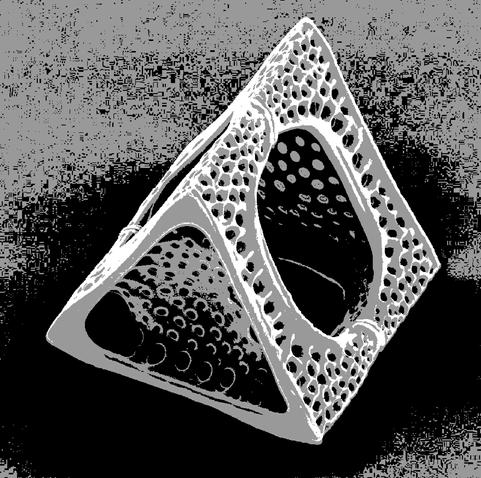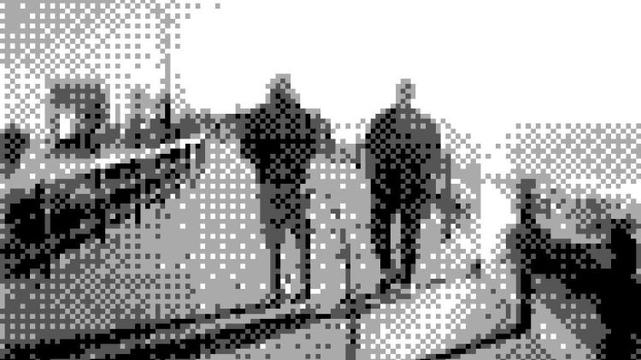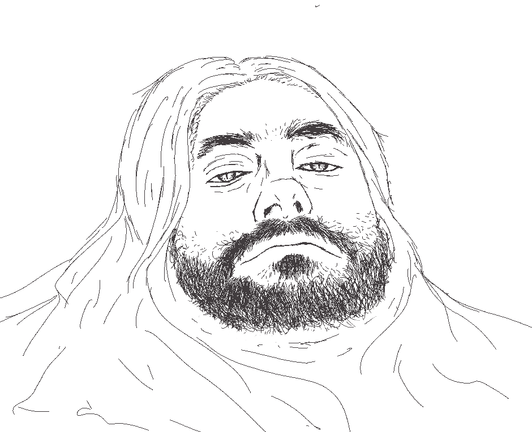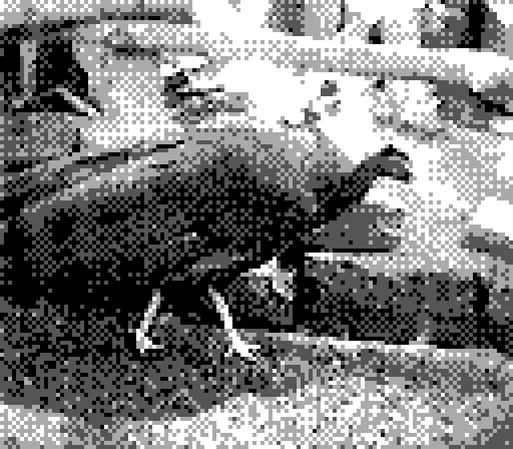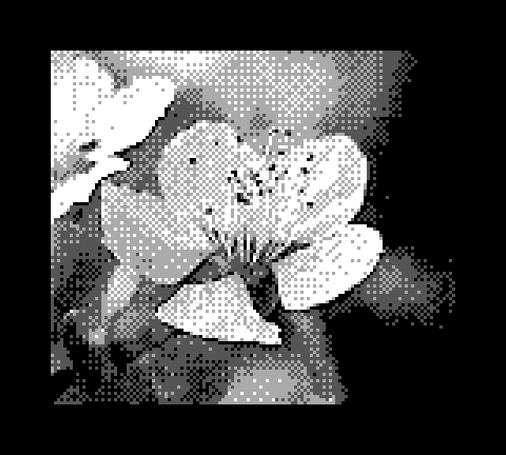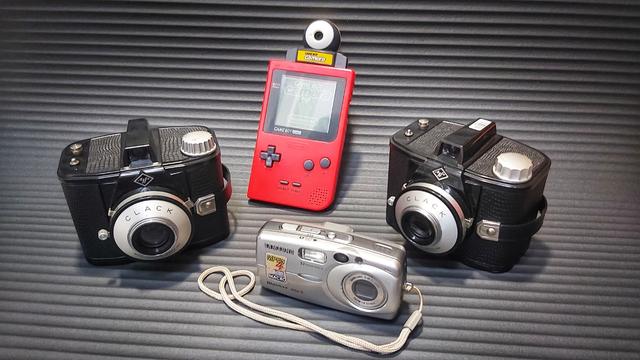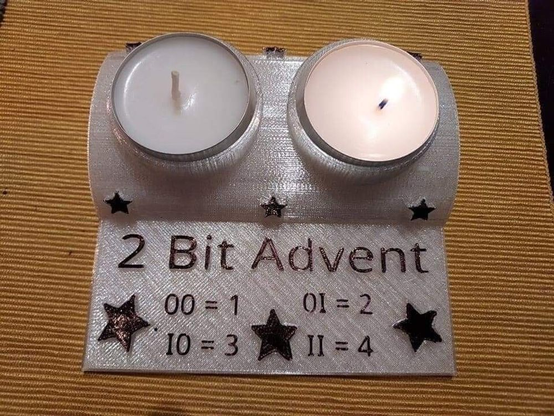Last year, Stephen Dowling of Kosmo Photo asked a group of camera bloggers to write about three cameras they discovered in 2022 and what each one meant to them. Well, I gatecrashed this party and came up with the three cameras that I had most enjoyed using during the year: The dainty little Ikkosha Start 35k with its homemade 35mm Bolta spools, the self-converted full-spectrum Panasonic Lumix DMC-TZ8, and the Kodak ‘Handle’, which I successfully adapted to work with Instax Square film.
This year I found myself experimenting with lots of different cameras and techniques, both film and digital, and there were some real favourites among them. For the first time I also took part in some annual ‘challenges’ besides my favourite, the Shitty Camera Challenge. So without further ado, let’s get going.
The Agfa Clack
My first favourite camera this year is the Agfa Clack, possibly the nicest ‘box’ camera I have ever used. At the end of 2022 I decided that I would participate in the Frugal Film Project. This is a one-film/one-camera challenge devised and established by Sherry Christensen a few years ago. The idea is to use the cheapest film you can find and a camera that costs less than 75€ and shoot one roll of film each month for the calendar year. It can be any subject or any theme and each month the images are posted to social media.
I chose a camera that I had wanted for a long time, the Agfa Clack, which cost 29€ from the Kamerastore website. The Clack is as simple as a camera can be. Made between 1954—1965 it features a single shutter speed of about 1/30s and two apertures of f/11 and f/14. It takes 120 film and produces eight 6×9 cm images on a curved film plane. My film of choice was Fomapan Retro 100, a black and white negative film made in the Czech Republic. With a box speed of 100 ISO but a purported latitude of between 50—400 ISO, I thought this would be ideal for the Agfa Clack. With its 1/30s shutter speed I could set it at f/11 and use filters and still get decently exposed images.
It was great fun, travelling around and taking photos with the Agfa Clack, but throughout the year I was plagued with ‘fat’ rolls, when the film roll and paper backing doesn’t wrap tightly around the take-up spool. I thought that this might be the fault of the film stock, so I tried a different film stock … and got a fat roll. I had one further idea, that the mechanism wasn’t holding the film tightly, and invested 10€ in another Agfa Clack with a broken wind-on knob. Unfortunately the spring in the new camera wasn’t compatible and that idea was unsuccessful.
I also found out that the Agfa Clack is great for lens flipping. It has a single meniscus lens that can be dismounted, turned over and replaced to give a stunning blur effect around the outside of the image, the Deakiniser effect named after the film cinematographer Roger Deakin, who developed the technique. Even though I was still getting fat rolls, I was reluctant to use my original Clack so I found a third camera online, also for 10€ but with a fungus-ridden lens, took it apart, cleaned it and flipped the lens.
This was excellent, the ‘Deakinized’ images were coming out lovely, but I was still suffering with ‘fat’ rolls with this ‘new’ Clack so perhaps it’s something to do with modern 120 film stock. Who knows? Eventually, I found a piece of firm sponge in the local supermarket and glued this underneath the take-up spool. So far this simple hack seems to have cured the fat roll issue.
I tried several techniques with the Agfa Clack and the Frugal Film Project throughout the year; regular black and white photography, trichromes, and even the Vortoscope, a triangle of mirrors clamped together, and it was a wonderful experience. Next year I hope to take part in the Frugal Film Project 2024, and who know, perhaps that camera will appear in this list next year.
The Samsung Digimax U-CA3
As anyone who I follow or who follows me on social media will know, I am a sucker for early noughties digicams. Like most journeys with my resurgent interest in all things photography it started with a Kamerastore Outlet Box, when I picked up a range of digicams for just a few Euros, including my full-spectrum Panasonic Lumix DMC-TZ8 that featured in this list last year.
I also discovered the existence of ‘generic’ cameras that crop up on the CEX website quite regularly. Normally these are low resolution (nowadays) cameras from reputable brands like Nikon, Olympus and Canon (one of my favourite generic cameras was a beautiful condition Canon Powershot G5 for 2-3€) but you don’t actually know what you will receive until the package drops through the letterbox.
So I was a little underwhelmed when I opened one package to find a Samsung Digimax U-CA3. It was the middle of a Shitty Camera Challenge when I spotted a ‘generic’ 3MP camera which I thought would be ideal to convert to full-spectrum, and for 1€ (plus 2,50€ for delivery) it was cheap enough that if I screwed up I could just bin it without feeling too bad. I pressed ‘comprar’ (buy) and added it to my basket. A few days later a well packed jiffy bag arrived in the post containing a Samsung Digimax U-CA3, the charger and some cables.
Upon charging the camera I realised that it used a Memory Stick Pro Duo (the shorter version of the Sony memory stick) for storing image files. This wasn’t really an issue as it worked quite happily with the Memory stick from the PlayStation Portable, but I wanted a dedicated card for the Samsung. A few days later I had a fully working Samsung Digimax.
Of course, the first thing I wanted to do was to check out its infrared sensitivity. So I attached it to a mini tripod, grabbed my little wallet of filters and went across the road to photograph my favourite tree (actually two trees) and abandoned well on a patch of scrubland. After taking several photographs, with and without filters, the digital aerochromes were spectacular with beautiful pastel red vegetation and natural looking buildings and skies. I was amazed, and although my intention was to make this camera full-spectrum, after such amazing results I decided to leave it as it was.
I’ve been out with the Samsung Digimax U-CA3 several times, and each time it’s produced some wonderful digital aerochromes, like this one of the Ponte Pedonal de Ligação Baixa de Santo António in Aveiro, which is a wonderful metal structure surrounded by trees that I knew would look spectacular as a digital aerochrome.
The Nintendo Gameboy
I don’t think anything needs to be said about the Gameboy … but I’m going to anyway. I’ve been the proud owner of a Gameboy console and the Gameboy Camera since January 2023, and it’s my favourite camera of all time. I managed to get my hands on one for the Shitty Camera Challenge, and since I’ve had one it’s been hard to put down. I’m also convinced that the Gameboy was the factor that tipped the scales into my becoming Shitty Camera Challenge Champion for the #1990sCameraChallenge, probably the single most important achievement of my whole life. 😉
The Gameboy Camera is a 0.0.014MP monochrome camera that records four shades of grey to produce super low resolution funtographs (as Gameboy photographs are known). Using the Gameboy camera looks simple enough, but in truth one needs to master a few steps to produce really nice images. The Gameboy camera is actually a full spectrum device — the sensor has no infrared cut filter to stop wavelengths outside the visible spectrum from showing on the image — so in full sunlight using an infrared cut filter will make trees and the sky look natural.
Although getting good results can be still quite hit-and-miss, the Gameboy can produce some lovely monochrome funtographs. But with a little work it can also produce some striking trichromes too, and even digital aerochromes in infrared. Making infrared trichromes, digital aerochromes, emulating the look of the defunct film Kodak Aerochrome, is one of my favourite pastimes, and I attempt this with all new cameras, often with mixed success. The first Gameboy trichromes/aerochromes were really awful, but with a little practise they’ve started to come out quite nicely.
If I could I would use the Gameboy all of the time, but I’m trying loads of other things so I forcibly cut myself off from it for a while — I went cold turkey. One of the things I’m working on at the moment is to get a c.1925 Kodak 1A Autographic Jr back up and running, which is certainly a work in progress, and I’ve also just invested in a similar period 9×12 large format camera that I hope I can use with Instax Wide film. That might even become my camera of choice for the 2024 Frugal Film Project. So there’s certainly a lot going on and I hope the 2024 entry of this series will be quite different (though with more Gameboy funtographs).
If you are reading this and fancy entering your own three cameras, please go ahead, and if you could add a link to this post, that would be awesome. If you fancy reading more top three cameras from this year then they can be found at the links below:
Stephen Dowling, Kosmo Foto: Three Cameras of 2023
Jim Graves, My Journey onto Photography: My Top Three Cameras of 2023
Shawn Granton, The Urban Adventure League: My top three film cameras for 2023: Recency bias, the Honeymoon period, and plateauing
Have a good year and see you in 2025.
https://keithdevereux.wordpress.com/2023/12/27/three-cameras-from-2023-my-favourite-experiences-this-year/
#1990sCameraChallenge #2Bit #Aerochrome #AgfaClack #Digicam #FrugalFilmProject #Funtography #Gameboy #Infrared #Nintendo #PixelArt #Retro #Shittycamerachallenge #Trichrome #Vintage
